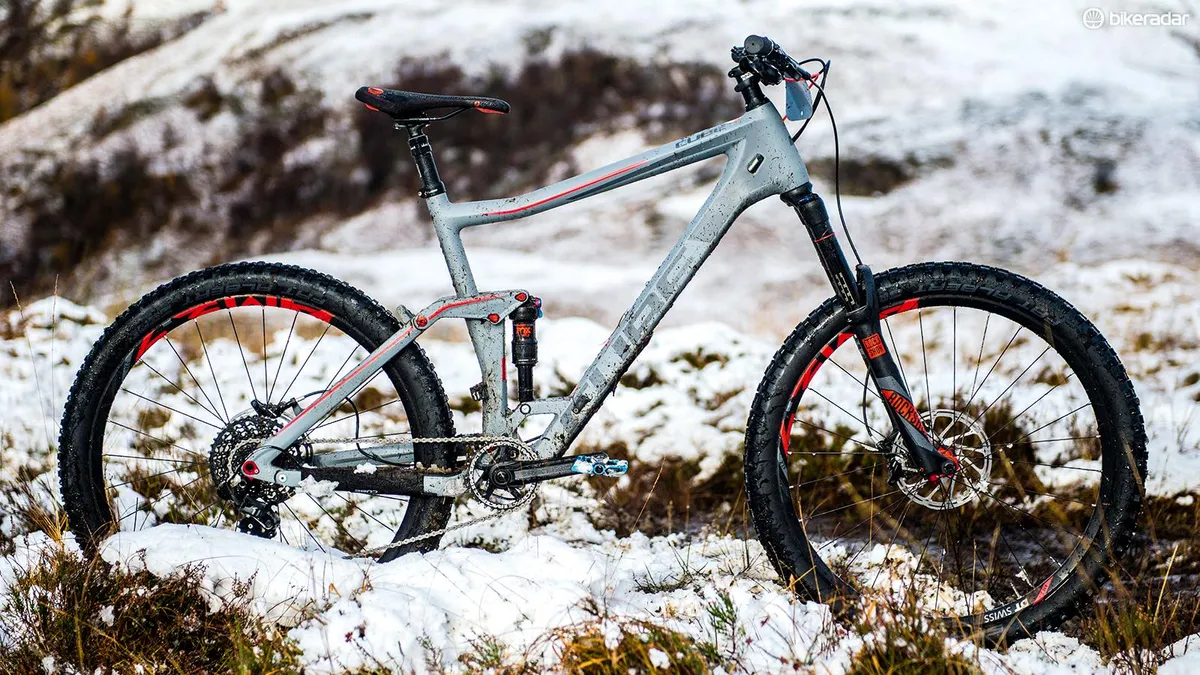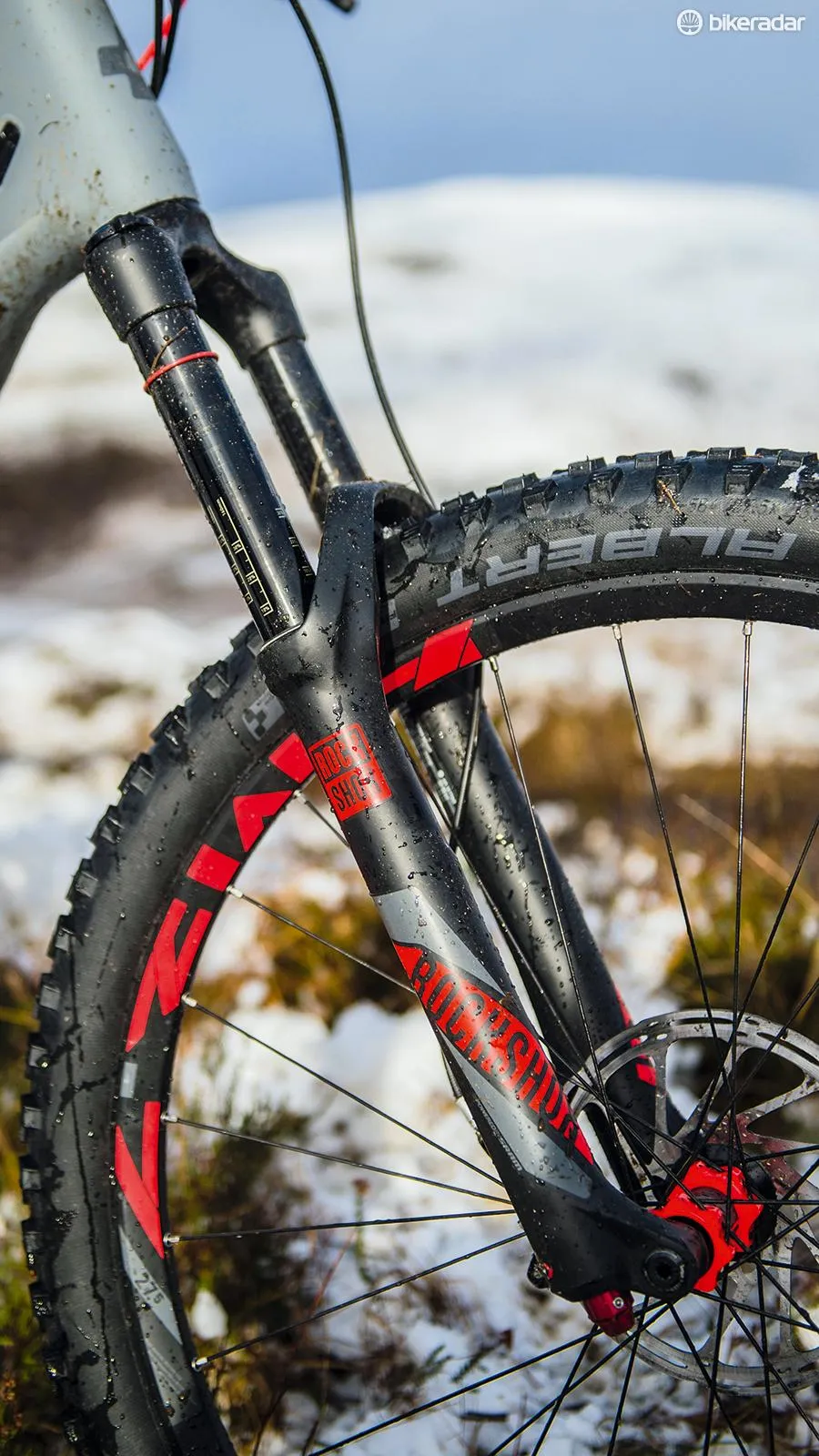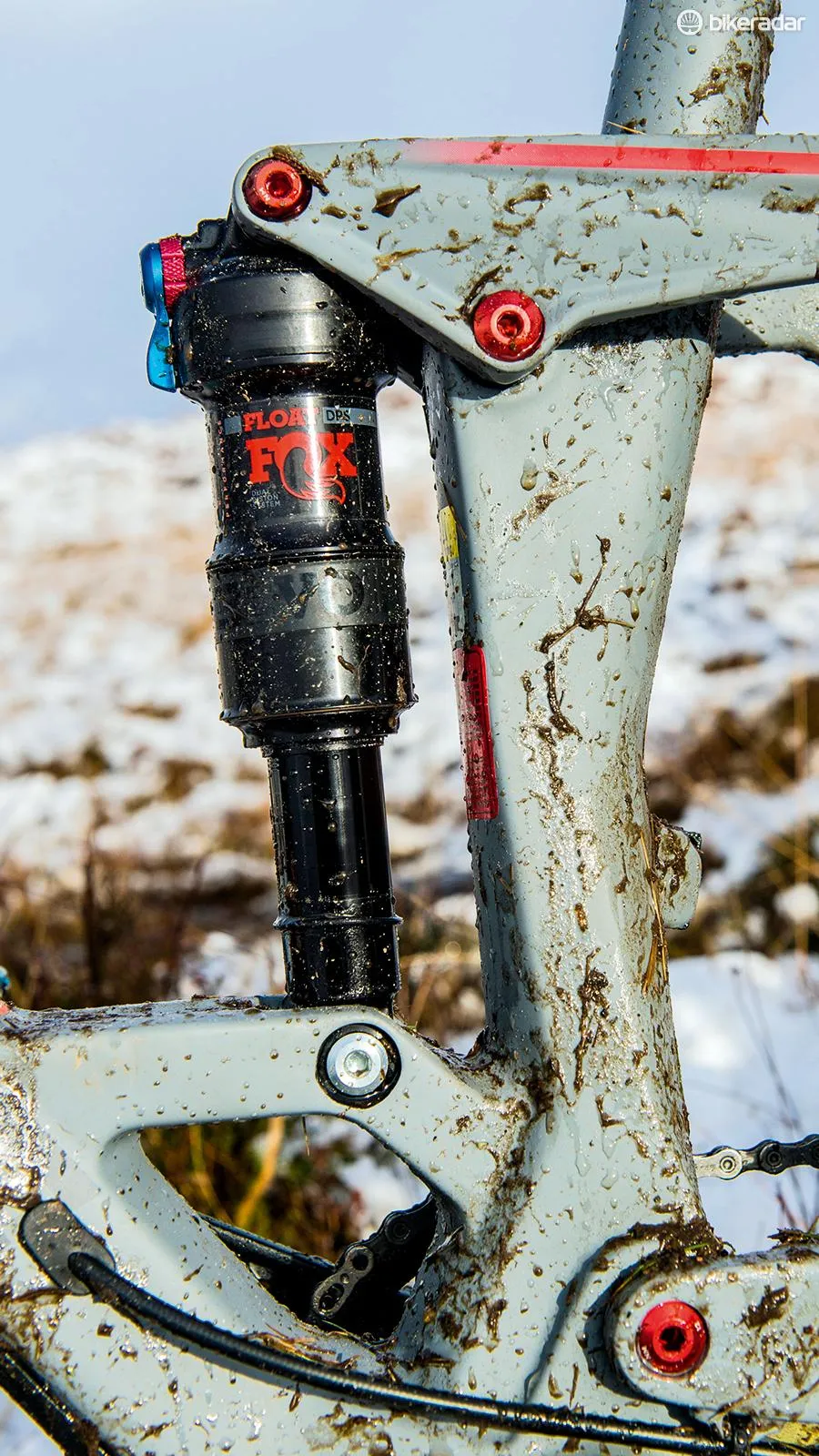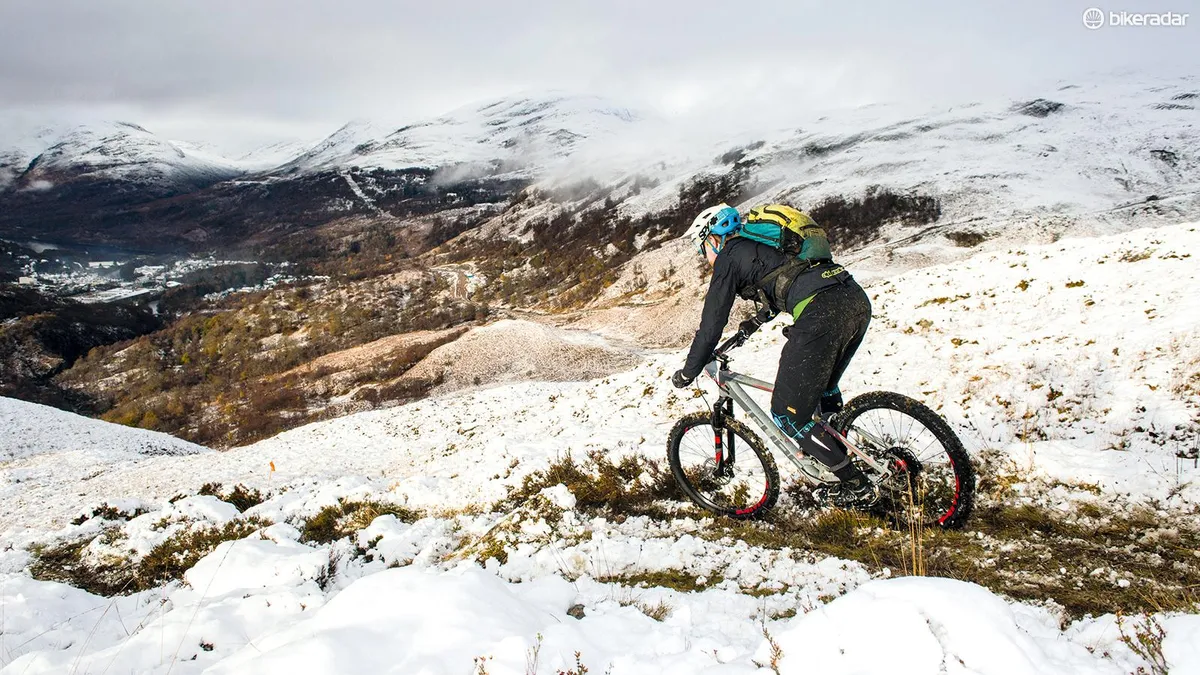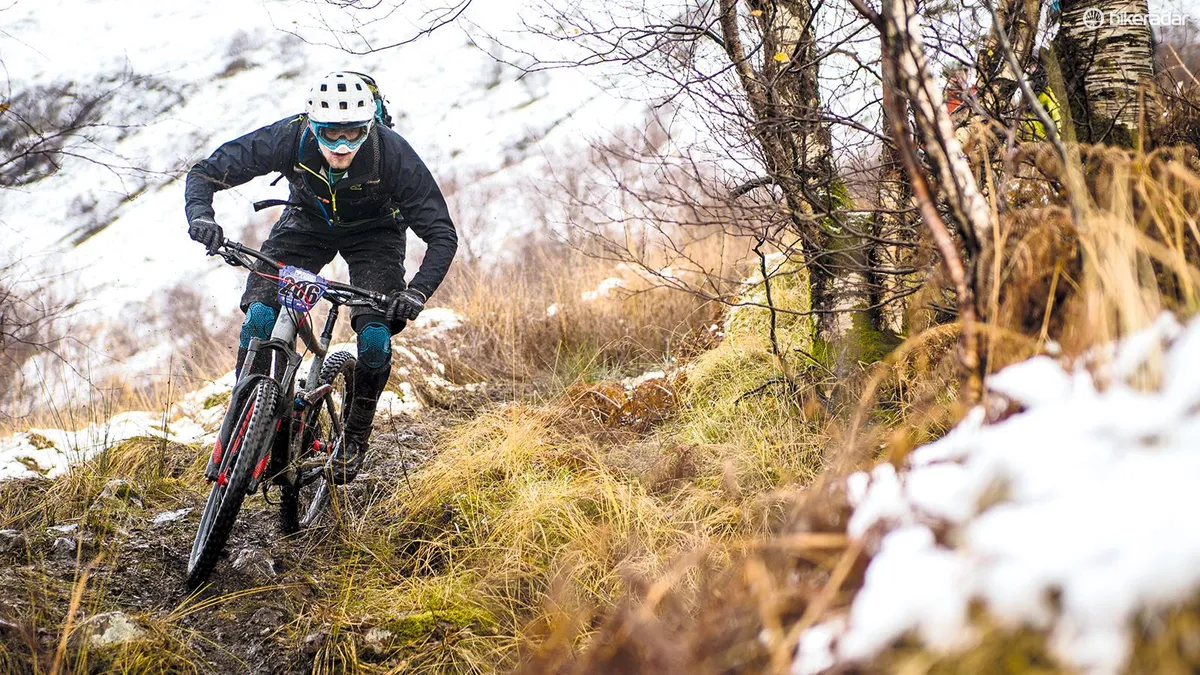There’s’ no denying the Stereo’s race-winning pedigree. At the hands of Nico Lau and Greg Callaghan, it’s seen its fair share of EWS success. But when you look at the geometry, it appears Cube struggles to think outside the box.
My 22in Stereo 160 (the biggest in the range) has a tight 1,215mm wheelbase; cramped 448mm reach, and a steep 66-degree head angle. You might imagine that this makes it as agile as an eel in the corners. That’s not what I found.
Stifling stem
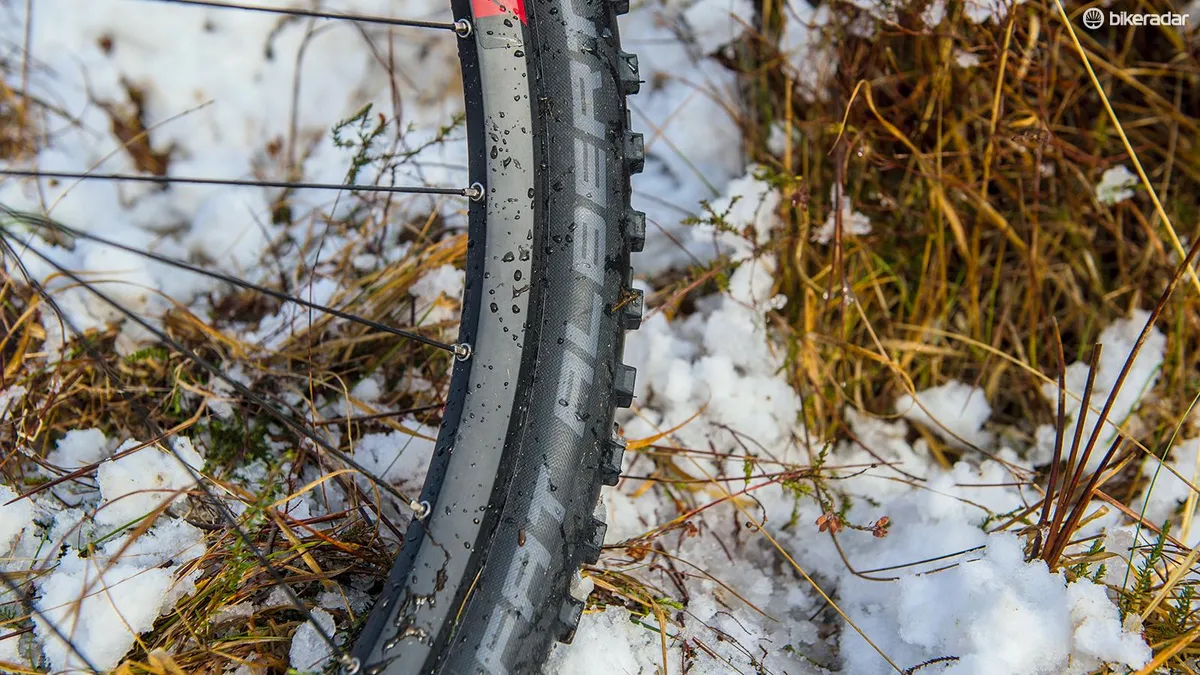
The 60mm stem fitted to my bike actually made the steering lazier than the other two bikes. In back-to-back cornering tests, I found myself getting high-sided and running wide in quickly alternating turns. The long stem has a huge effect on how lively and agile the bike feels in the turns, making the Cube turn lazily despite the short wheelbase and low bottom bracket.
The short reach/long stem combo also affects the Stereo’s ability to tackle steep, technical terrain. Even with the bars at their maximum height (which didn’t help with that cornering agility), I occasionally felt that over-the-bar offs were practically inevitable when confronted with deep holes and steep steps. The narrow 760mm bar doesn’t help here.
A shorter stem would help in solving both of these issues, but there’s a catch. The short reach already feels a bit cramped on flatter terrain and climbs. Another solution would be to size up, but the Cube’s very high stand-over prevents this. The bottom line is that the short and tall geometry is designed around a frustratingly long stem. That’s a shame, because the rest of the bike is impressive.
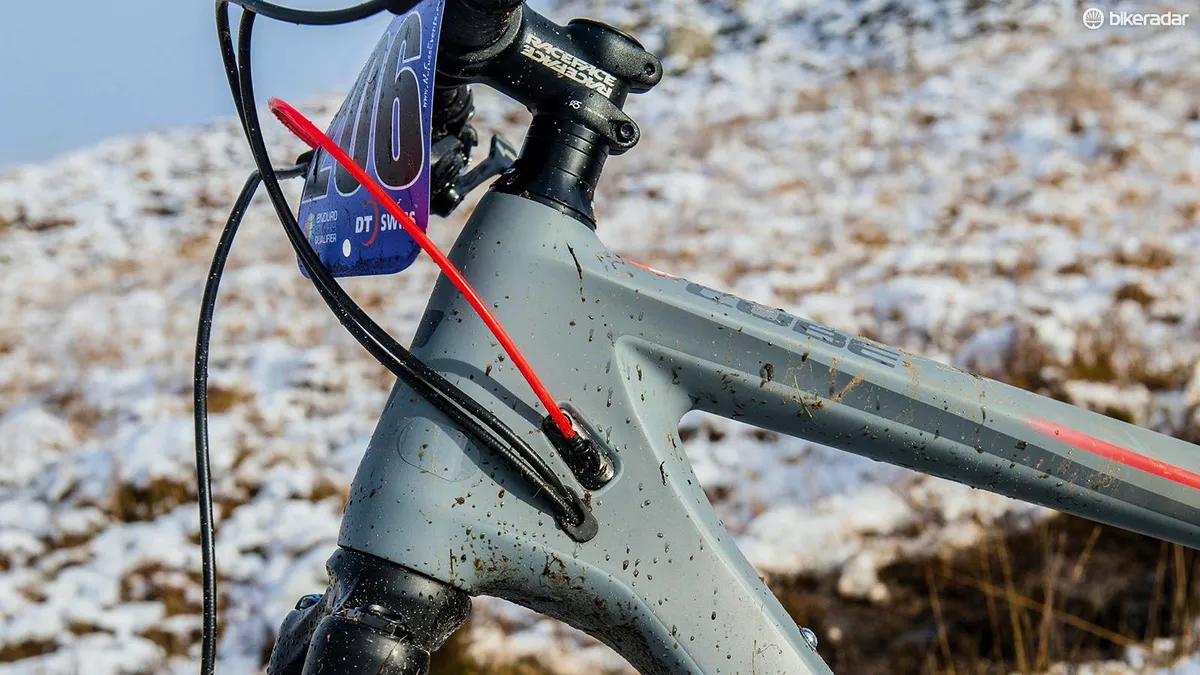
At first, the rear suspension wanted to plough through all of its travel too easily, but the largest available volume spacer in the Fox Float DPS shock solved this. The result was a gradual, supportive ramp-up to match the fork, which I set up with two tokens.
The Cube has a very supple suspension feel, remaining impressively active, especially under braking. The Pike fork may be a bit long in the tooth, but the 650b version is hardly lacking stiffness. The updated RC Charger Damper feels just as supple and supportive as the more expensive RCT3 version, and a whole lot smoother than the Yari. Together with the high volume and supple Fat Albert tyres, this resulted in a comfy, smooth and well-damped ride, holding speed well through rough terrain.
Even with the huge volume spacer installed, mid-stroke was slightly lacking when compared to the Mondraker, so I often used the medium compression mode for more aggressive riding. Due to its lack of a piggyback, the otherwise superb Fox DPS shock suffered from heat build up, causing rebound speeds to speed up throughout the stroke on long runs.
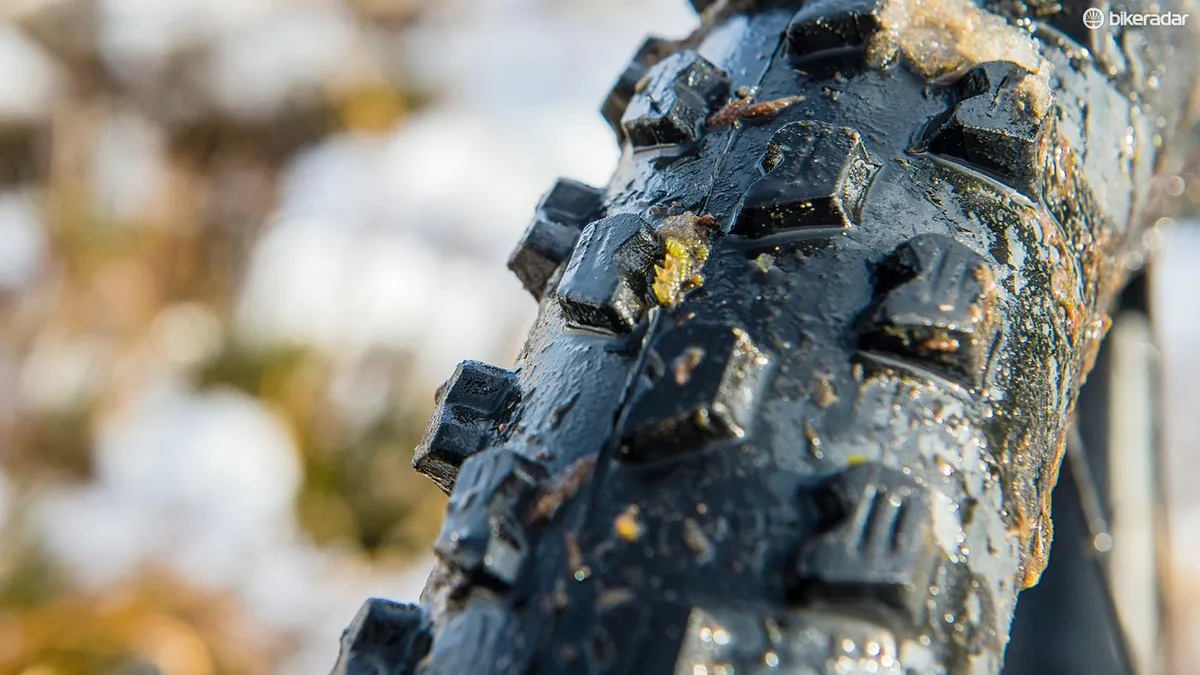
Social climber
The carbon frame and weight-conscious spec keeps it very light at just 27.7lb in this, the largest size. More importantly, it’s got a steep effective seat angle at 76 degrees. This puts you in a comfy and efficient position for attacking, rather than enduring steep, seated efforts with good traction and less fatigue. Though the short reach feels a little cramped even with a 60mm stem.
In contrast to the Orange Alpine 6, the Cube has relatively little anti-squat, so it bobs slightly when pedalling out of the saddle — though there is a lock-out. SRAM’s X1 gearing is also wider-ranging and noticeably crisper when shifting than the SLX and NX equipment of its peers.
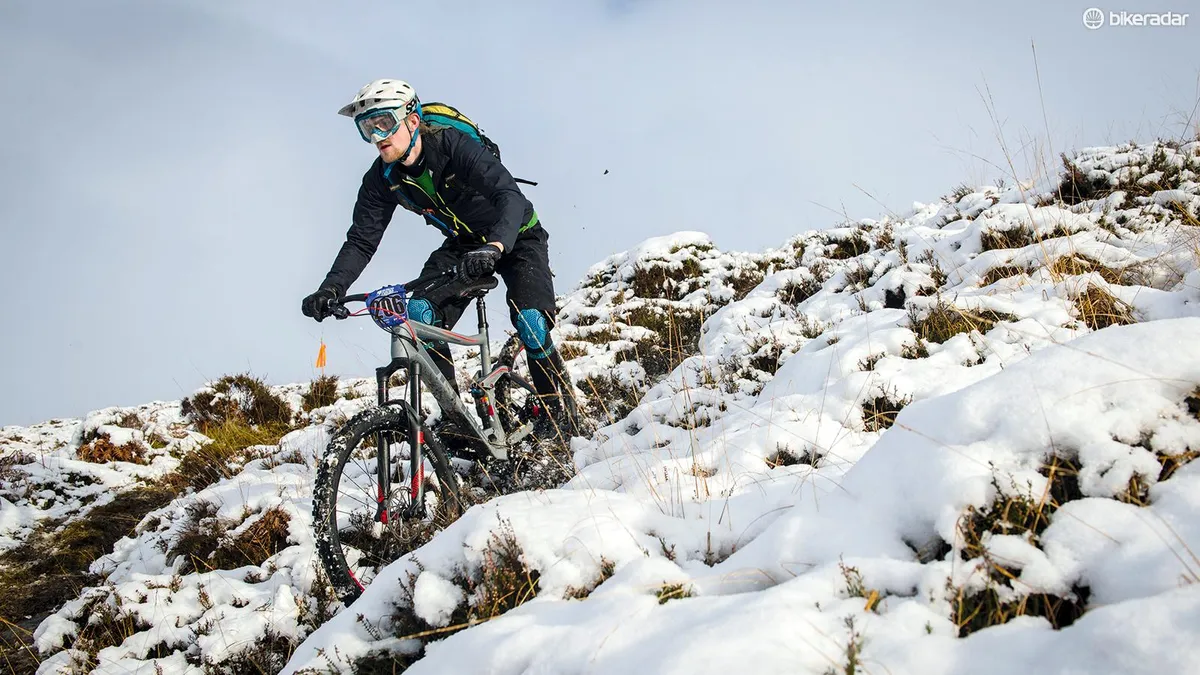
Brakes are Guide R with the old style calipers. These have performed well in the past, but in the gritty Scottish conditions they were poor, with too much dead stroke and little power.
Nevertheless, when tackling the kind of terrain that a 160mm bike should be used for, the Cube is sadly flawed. The steep head angle, short reach and long stem make it awkward in the turns and a handful on steep, rocky terrain.
The Fat Albert tyres are puncture prone and slippery in the wet. I’d also prefer a piggyback shock and standard, non-bolted Maxle axle. It’s a lightweight and comfy bike, but doesn’t have the geometry or the spec to exploit the travel or match its enduro pedigree.
